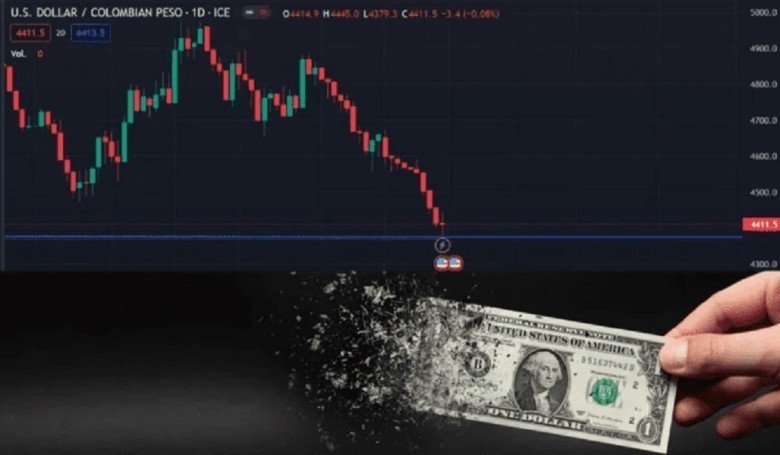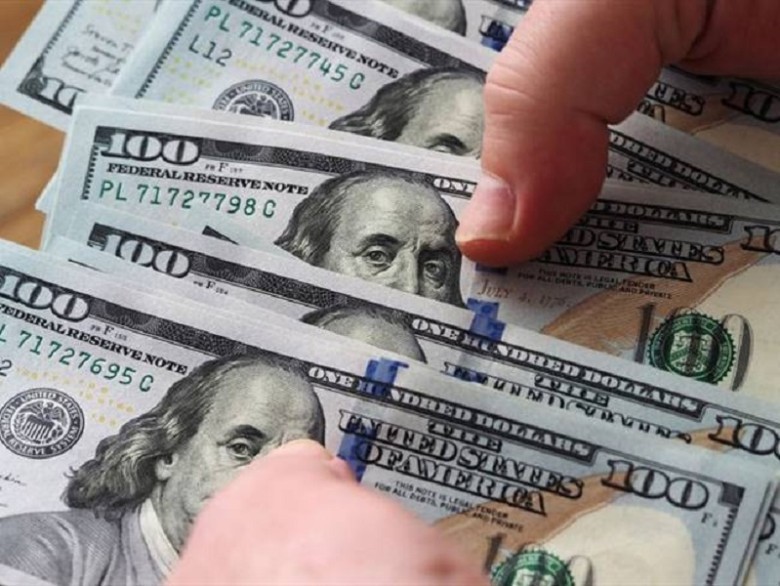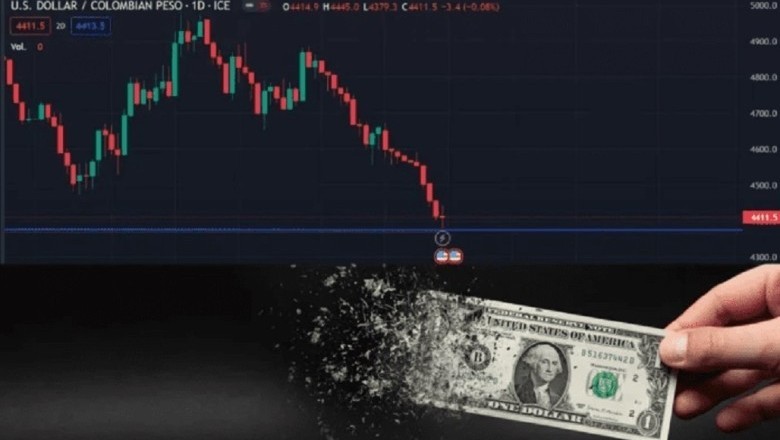The Dollar Plummets as Uribistas Struggle to Find Their Way

The dollar has lost more than $600 pesos since reaching its peak of $5,100 pesos in November 2022. It closed on Friday, April 14, 2023, at $4,410 pesos.
The Uribistas, who were taking advantage of the situation to create economic panic, are now disheartened and unsure of what to do to discredit the Petro government and "sell out the country." The dollar continues its downward trend.
In a session characterized by a sideways movement, the USDCOP remained stable compared to the previous session, closing at $4,410 for the second consecutive day (Friday, April 14, 2023).
Although the pair opened with an upward gap of $15, it corrected downwards during the session, reaching a minimum of $4,408, just above the psychological barrier of $4,400. The market operated with high volatility and with catalysts at both the local and international levels. First, the statements by A. Goolsbee, a member of the FED, about a possible recession translated into an increase in two-year Treasury bond yields of 12.19pb, pushing the rate to 4.1% and strengthening the dollar against its major counterparts.
However, at the local level, the result of February's manufacturing production was announced, showing an annual growth of 0.4%, well above analysts' expectations (-0.3%). Despite the slowdown that has been experienced, the industrial sector continues to exhibit resilience that has allowed it to avoid contracting, despite the cycle of interest rate hikes by the Central Bank.
On the other hand, the major currencies in the region strengthened, with the Colombian peso remaining stable. Transactions amounting to USD 1,966.26 million were carried out, with an average price of $4,425.43 for the pair.
Regarding the oil market, the prices of the main references increased on average by 0.32%, with Brent and WTI closing at $86.27 and $82.52, respectively. This is due to improved expectations of crude oil demand as a result of a recovery in consumption from China, as reported by the International Energy Agency (IEA).
Pluralidad Z believes that the dollar should be trading between $3,900 pesos and $4,000 pesos.
The Fall of the Dollar and the Uribistas' Dilemma

The recent drop in the value of the dollar has caused quite a commotion among the Uribistas, who are known for their support for former President Alvaro Uribe and their strong opposition to the current government led by President Petro. These staunch supporters of Uribe's policies and ideologies have always claimed to be the defenders of the Colombian economy and the guardians of the nation's interests. However, with the recent decline in the dollar, they seem to be at a loss as to how to react.
Since reaching its peak of $5,100 pesos in November 2022, the dollar has lost more than $600 pesos in value. This significant change has left the Uribistas in a state of disarray, as they were once quick to use any fluctuation in the exchange rate to create panic and undermine the government's credibility. However, with the current situation, they are finding it difficult to continue their fear-mongering tactics.
The stability of the exchange rate in recent days, with the dollar closing at $4,410 pesos for two consecutive days, has only added to the frustration of the Uribistas. Their attempts to portray the government's economic policies as detrimental to the nation's well-being seem futile when the exchange rate remains relatively steady. They are left wondering how to spin this situation in their favor and regain the public's support.
Furthermore, the Uribistas' claim that the Petro government is "selling out the country" is losing credibility, as the fundamentals of the Colombian economy remain resilient. Despite the challenging global economic conditions, Colombia's manufacturing sector has shown positive growth, surprising analysts who had predicted a contraction. This highlights the government's efforts to maintain stability and foster growth in the face of external challenges.

The Uribistas also face a setback in their attempts to discredit President Petro's administration by pointing to the strengthening of the US dollar against other currencies. The reality is that not only has the Colombian peso remained stable in the face of the dollar's decline, but other currencies in the region have also strengthened. This demonstrates that the situation is not unique to Colombia and suggests that there are broader economic factors at play.
In conclusion, the Uribistas find themselves in a difficult position. The dollar's decline has weakened their ability to create panic among the population and cast doubt on the government's economic policies. The stability of the exchange rate and the resilience of the Colombian economy undermine their claims of a nation in crisis. Going forward, they will need to adjust their narrative and find new tactics to discredit the government and regain their standing. However, in the face of positive economic indicators and a stable exchange rate, their task may prove to be more challenging than they anticipated.
























Comments
0 comment